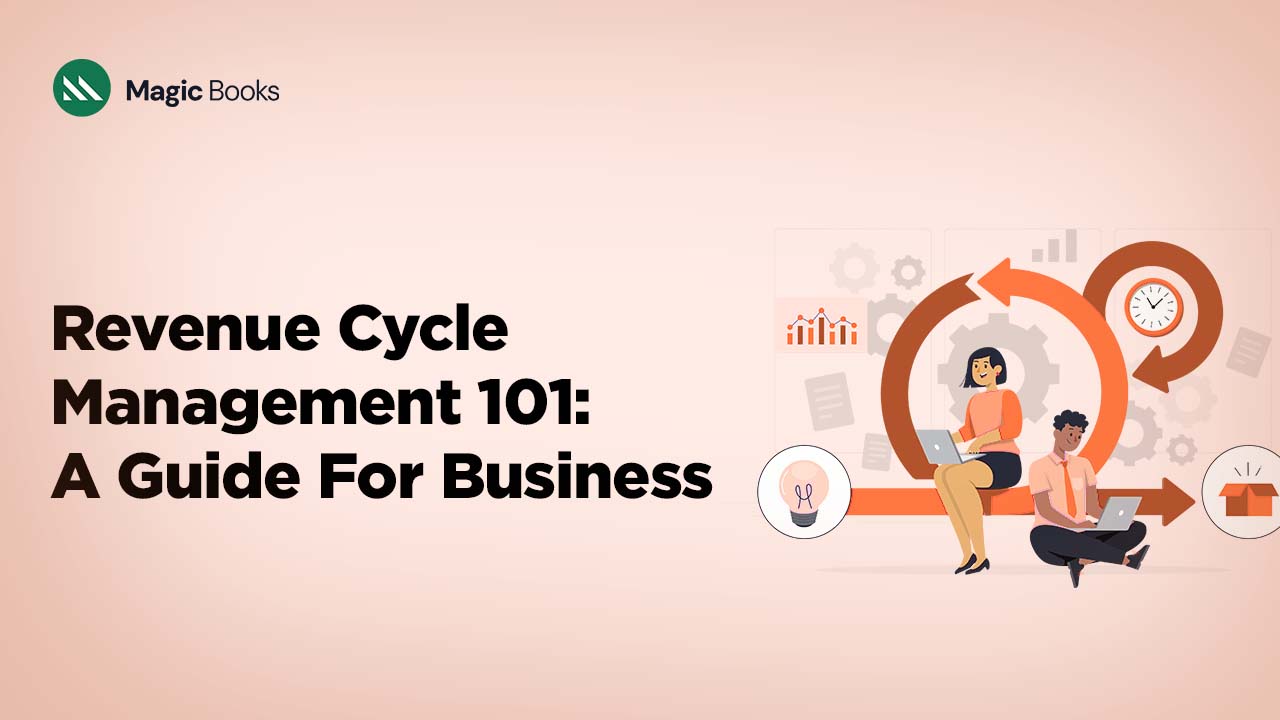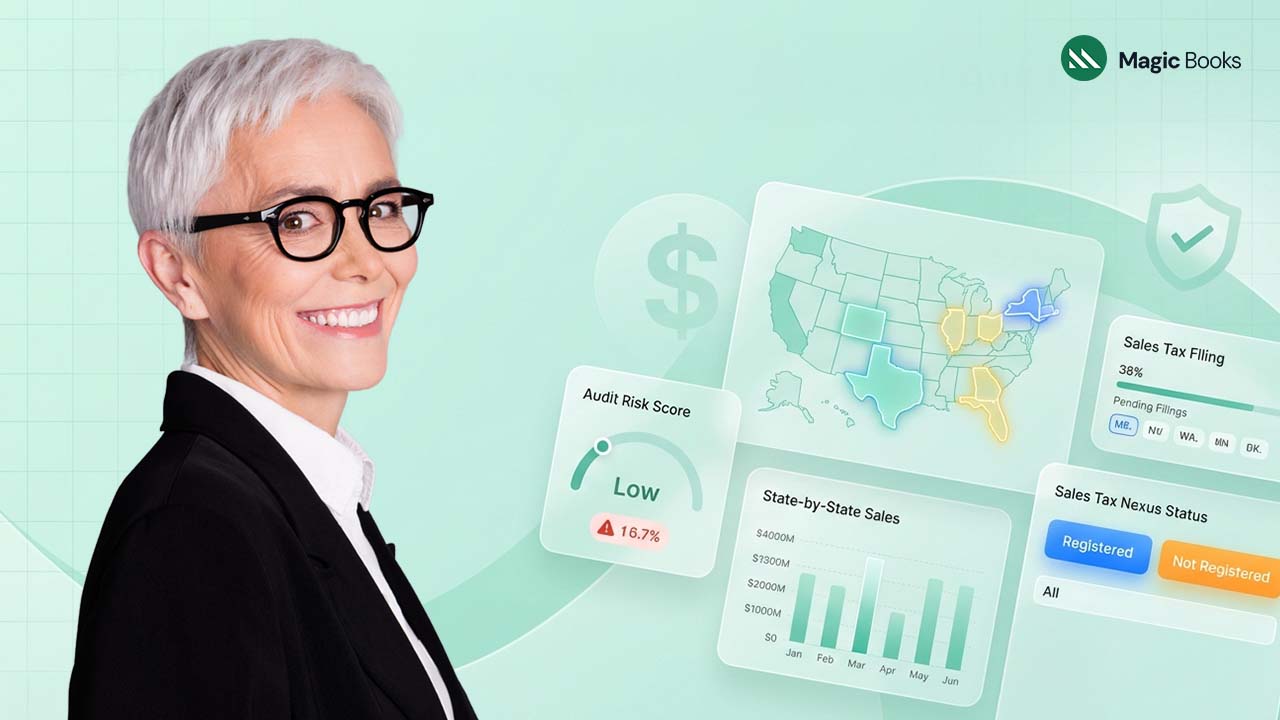A well-planned Revenue Cycle Management (RCM) process is important for businesses as it helps to ensure healthy cash flow, reduces exposure to operational risk and improves your customer / patient satisfaction. RCM involves the entire process from the time that a customer registers, to the time that all payments are reconciled.
The success of RCM involves the ability to manage a myriad of factors, such as performance by significant RCM metrics, policies and procedures, skills training, and collaborating across business functions. By monitoring RCM measures, such as Days Sales Outstanding (DSO), net collections and denials, organizations are better able to identify the areas of bottleneck and take measures to streamline their RCM process with the use of automation, trained staff and cooperation across stakeholders. B2B businesses face one set of billing and collections challenges, while B2C businesses face completely different challenges.
RCM software, in its modern incarnation, combines comprehensive dashboards, analytics, compliance, access to intelligent RCM technology and advanced analytics. Case studies show companies that reduced DSO % rates by up to 30% see a dramatically improved position to use that and other cash to be put to use more beneficially. Organizations need improved liquidity conditions and want to reduce administrative burden. This document provides definitions, breakdowns of stages, best practices, technology considerations, tips for finance professionals, bookkeepers and accountants looking to improve their RCM.
What is Revenue Cycle Management?
Revenue Cycle Management (RCM) is the process used by organizations to capture, manage and collect revenue for goods or services delivered, from the scheduling of an appointment or placing of an order through to reconciling with payments and closing accounts. In healthcare, RCM starts when a patient schedules an appointment and ends when the payments from insurance, write-offs, and patient balances are complete and reconciled. RCM also applies to any other business where prompt invoicing, claims management, and receivables management are critical to revenue stability.
Why RCM is Important in Today’s Business Environment:
Effective RCM establishes a revenue cycle health by improving cash flow with decreased Days Sales Outstanding (DSO) as collections are made faster, reducing the cost to borrow funds, and providing capital to pursue growth opportunities. Effective RCM also minimizes revenue leakage and compliance risk. In the healthcare and higher education sectors, aligning RCM factors also minimizes credit risk. Effective RCM is now even more important due to the new accounting standards ASC 606/IFRS 15, which requires revenue recognition at the time when control of the goods is transferred to a customer. Finally, seamless billing and payment experiences enhance the customer or patient experience, while also driving prospective referrals and repeat business.
The Four Core Stages of the Revenue Cycle:
Stage 1: Information Capture
Precise, granular data collection prior to billing is needed in order to avoid downstream errors and establish clear payment expectations.
- Generic Process: It entails gathering customer or client information (name, address, tax IDs, payment terms) and backup information (purchase orders, contracts, insurance eligibility) if necessary prior to issuing an invoice or providing a service.
- B2B Nuances: In business-to-business transactions, Information Capture extends beyond lead qualification, credit checks, and purchase-order matching to ensure invoices are in compliance with agreed terms and reduce the risk of disputes.
- B2C subtleties: With consumer billing, this phase is concerned with collecting customer payment and contact information (e.g., card or bank details) and checking the validity of payment methods in real-time, often through in-built payment gateways to reduce checkout delays.
Stage 2: Charge Capture & Billing
Turning delivered goods or services into clear, accurate invoices is really the key to getting paid on time.
- Generic Process: Charge Capture involves posting all fees, taxes, discounts, and surcharges that are applicable, and then creating and forwarding an invoice specifying what is due and when.
- B2B Subtleties: B2B bills usually feature line-item descriptions, contract-specified rates, volume discounts, and extended payment terms (e.g., Net 30/60). Automated billing software facilitates enforcing pricing terms and minimizing manual errors.
- B2C nuance: Consumer invoices are short and due on receipt—displaying explicit amounts, tax information, and multiple “Pay Now” options (credit card, digital wallet, ACH). Mobile-friendly, simplified receipts enhance payment conversion.
Stage 3: Receivable Management
Anticipatory monitoring and recovery of overdues avoid loss of revenue and reduce days sales outstanding (DSO).
- Generic Process: Receivables Management includes aging analysis, dunning workflows (auto reminders), dispute resolution, and application of payment against outstanding invoices.
- B2B Nuances: Sophisticated B2B cycles require strong approval processes—matching POs and delivery receipts to invoices—along with open lines of dispute escalation. Automated three-way matching can reduce exceptions by up to 80%.
- B2C Specifics: Automated reminder emails, SMS notifications, and self-service websites enable customers to see and pay balances in a matter of minutes. Gateway integration supports one-click settlement, lowering DSO and enhancing customer satisfaction.
Step 4: Increasing Revenue
Besides just wrapping books, smart companies use data to enhance renewals and upsells and make their processes smarter.
- Generic Process: Revenue Enhancement employs analytics—monitoring such metrics as DSO, net collection rate, and dispute rates—to classify inefficiencies and guide ongoing optimization.
- B2B Nuances: “Renew & Expand” modules are typically available on enterprise platforms, which automate contract renewal, upsell invitations, and multi-year commitment negotiations. Having a single pane of glass for contract and invoice histories enhances cross-sell success.
- B2C Nuances: Subscription and loyalty schemes are complemented by automated renewal billing, customized offers on the basis of past purchases, and retention efforts focused on specific individuals. Bringing analytics into CRM systems personalizes promotions and minimizes churn.
Key Metrics and KPIs to Track:
Days Sales Outstanding (DSO):
Days Sales Outstanding measures how many days it takes between a sale and receiving payment.
| The formula to calculate DSO is (Average Accounts Receivable ÷ Total Credit Sales) × Days in Period. |
B2B Context:
In B2B environments, negotiated terms (e.g., Net 30/60/90) and multi‐step approval processes often lead to DSO exceeding invoice terms. According to Upflow’s 2024 B2B Payments report, median DSO is 56 days across all industries, with Consulting always hitting 75-90 days.
B2C Context:
Consumer‐facing businesses want to match or exceed standard payment terms (most often Net 30). Shopify, a leading B2C SaaS company, averages DSO closer to 30 days due to their built-in payment gateways and instant invoicing.
Net Collection Rate:
Net Collection Rate (NCR) indicates the percentage of allowed revenue that has actually been collected, after adjustments and write-offs have occurred.
| NCR is calculated using (Payments Collected ÷ (Charges – Contractual Adjustments)) × 100. |
B2B Context:
For most B2B company types, and especially regulated industries, MGMA and all AAFP benchmarks aim to achieve an NCR target of 95-99 %. When the NCR dips below 95%, it is evident that there are gaps in the processes associated with billing accuracy or denial management. Also, using a 12 month rolling period to analyze NCR smoothed out seasonal variations each year.
B2C Context:
In B2C transactions, real-time payment validations supported by various pay-now options, (for example: cards, ACH, digital wallets) should allow NCRs to only extend above 98%. Tebra found that best practices with consistent NCRs of 96-99% invested in automated reminders for patients with payment outstanding, as well as utilizing retry logic for soft declines.
Denial Rate and Reversal Rate:
| Denial Rate = (Number of Denied Claims/Invoices ÷ Total Submitted) × 100. Reversal Rate (Overturn Rate) = (Number of Successfully Appealed Denials ÷ Total Denials) × 100. |
Contingent Context (B2B): Complex B2B transactions can lead to denials for a multitude of reasons such as PO discrepancies, unfulfilled contracts or simply non-compliance. According to Kodiak Solutions, there was an initial denial rate of 11.8% in mid-2024, mostly due to coordination-of-benefits and information requests. A best practice is to try and keep denial rates to less than 8% while maintaining a reversal rate of over 50% through a dedicated appeals team.
Contingent Context (B2C): “Denials” in B2C is thought of as declined payments. 11% of e-commerce transactions fail in a given year due to expired cards or gateway errors in billing and payment. Top merchants utilize retry logic and card-updating services while reaching directly out to customers for failed payments in an effort to maintain their effective denial rates to below 5% in a similar fashion to better health care denial benchmarks.
Core RCM Evaluation Criteria:
- Integration Capabilities: A top-tier revenue cycle management (RCM) solution will integrate bi-directionally with your enterprise resource planning (ERP)/electronic health record (EHR) system, practice management system, or customer relationship management (CRM) software, providing complete visibility into the revenue cycle. Ideally, a leading RCM platform will offer APIs, or pre-built connectors for automation of data sharing (aspects like patient demographics, service codes, or payment statuses), that eliminate reliance on manual data entry, thereby decreasing downstream errors.
- Automation & AI Features: Automated eligibility verification, claim scrubbing, and denial prediction can greatly accelerate processing times. Leading RCM solutions, including Waystar, report 30-40% fewer manual claim reviews using their AI-driven workflows. Furthermore, robotic process automation (RPA)-based features can help automate mundane tasks, such as payment posting or follow up reminders, allowing staff to focus on management of exceptions.
- Analytics & Reporting: Best-in-class dashboards displaying real-time key performance indicators (KPIs)—such as days sales outstanding (DSO), net collection rates, and denial trends—as well as customizable reporting, can help streamline and optimize your processes over time. More advanced platforms also provide predictive analytics—identifying accounts at-risk of default, before they do—and benchmarking tools to compare your performance against your competitors.
- Compliance and Security: Since financial and patient data is sensitive, an RCM system must comply with HIPAA encryption standards and have certifications such as SOC 2 or HITRUST. Verify a feature set that includes granular access controls, audit trails, and ongoing security assessments to reduce breaches and assure regulatory compliance.
- Scalability and Flexibility: A cloud-native architecture enables organizations to scale processing volume and storage as a business demand without incurring large upfront infrastructure costs. If considering a modular solution, many RCM systems allow the organization to phase the implementation by starting with a base billing module with the capability to add future advanced modules – like analytics or patient-engagement solutions – thereby reducing disruption.
A successful revenue cycle management (RCM) process captures, codes, follows up on claims, and scrubs accounts receivable (AR) tools with metrics and automation. Undertake a baseline audit of cycle times and current denial rates and select use cases related to automation that fall in the “Low Effort, High Impact” zone. Get stakeholders from finance, operations, and IT involved early, and select a RCM vendor that has a flexible platform that can grow with you.



